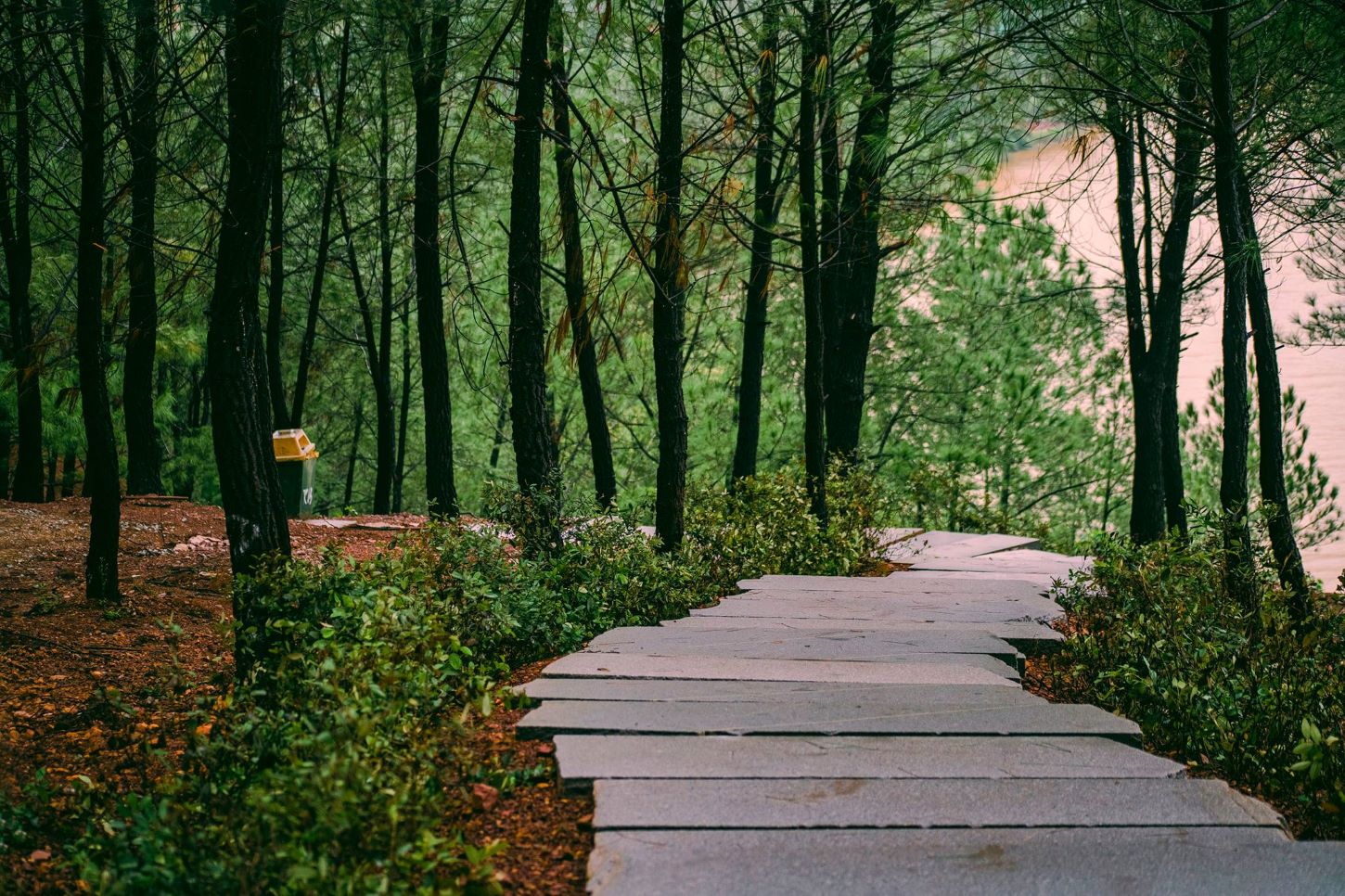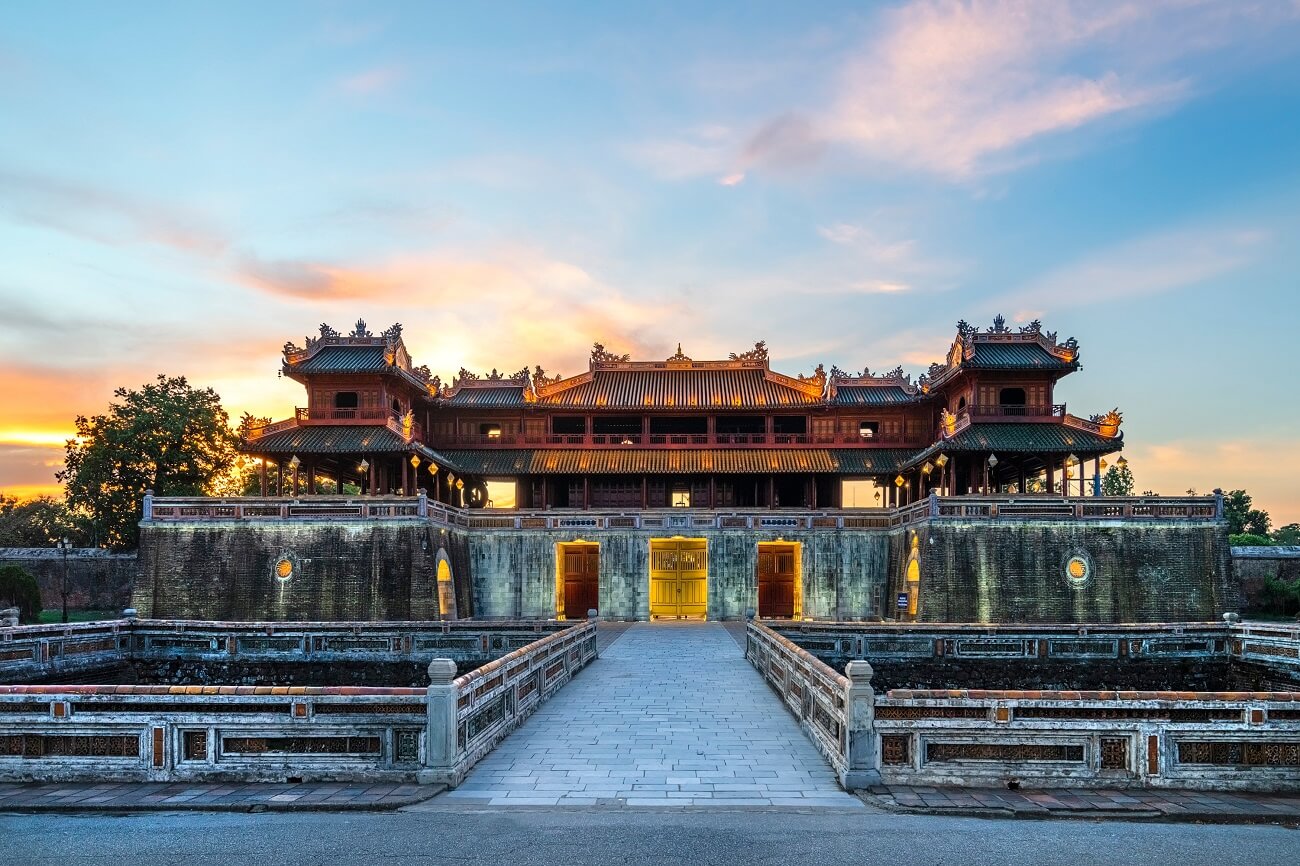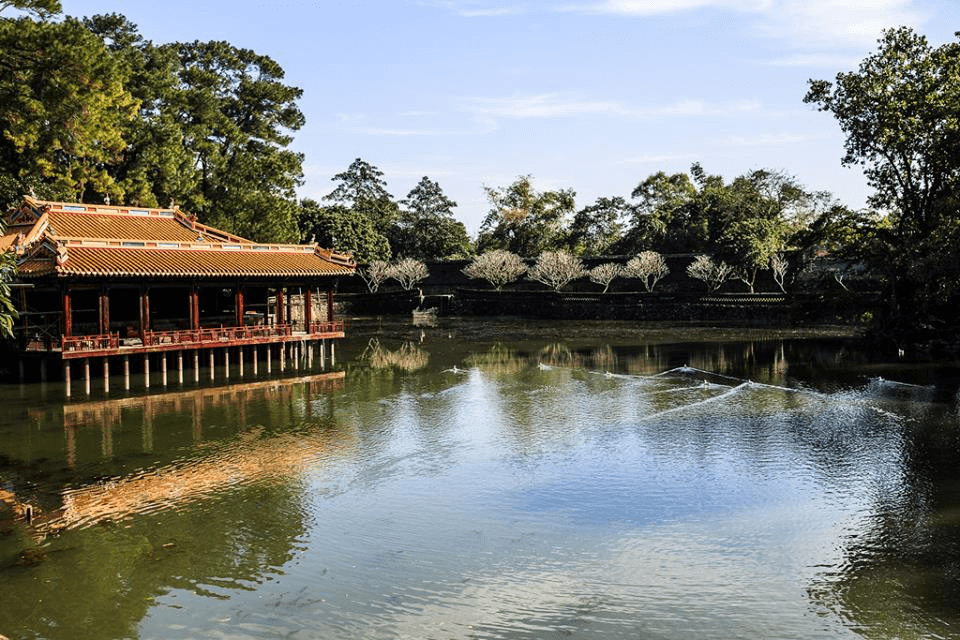Minh Mang Mausoleum, also known as Hieu Mausoleum, is considered a stunning architectural complex that blends art, philosophy, and natural beauty, evoking a sense of timeless elegance, grandeur, and historical significance. This is the final resting place of the second emperor of the Nguyen dynasty, Emperor Minh Mang, who left his mark with many important changes in many fields, contributing to shaping an important historical period of Vietnam. Join Queen Cafe Bus to discover this must-see destination on your journey to explore the heritage sites of the ancient capital of Hue!
1. Overview of Minh Mang Tomb in Hue
1.1. Where is the Minh Mang Mausoleum located?
The exact location of Minh Mang Tomb: Cam Ke Mountain, in Huong Tho Commune, Hue City, Thua Thien Hue Province. This location is strategically situated at the confluence of the two rivers, the Ta Trach and Huu Trach, forming the poetic and romantic Huong River, creating a picturesque landscape.
Regarding the distance from the mausoleum to the city center: approximately 12km, convenient for visitors to travel to visit, while still maintaining its tranquil and secluded atmosphere.
1.2. History and Construction Process of Minh Mang Mausoleum in Hue:
The Minh Mang Mausoleum is a structure rich in artistic and cultural value. It is not only a place of eternal rest, but also bears the distinct mark of the vision and aesthetic sense of the enlightened ruler. The construction of the tomb was conceived quite early, from 1820 to 1840, and after 14 years of continuous research, the ministers of the Nguyen dynasty chose Cam Ke Mountain because it had all the special feng shui elements, creating a space in harmony with nature and the terrain.
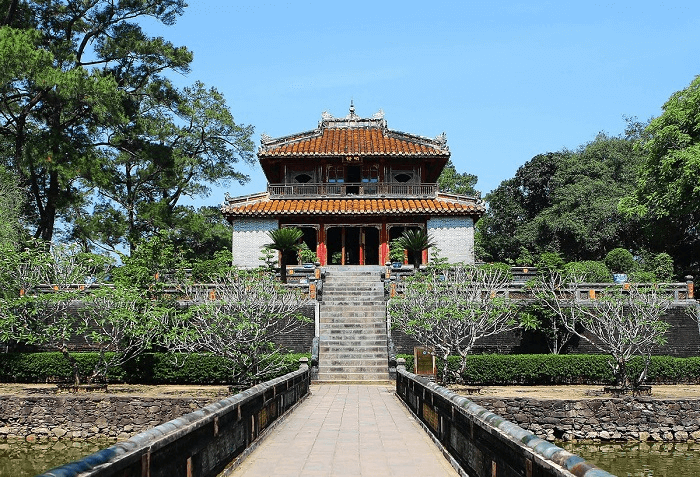
Construction of the mausoleum began in April 1840 under the direction of the king and his ministers. However, due to the sudden death of King Minh Mang in January 1841 while the project was still unfinished, King Thieu Tri continued his father's wishes and directed the completion of the mausoleum in 1843 according to the blueprints approved by his father.
1.3. The Meaning and Distinctive Architectural Philosophy of Hieu Ling
Minh Mang Tomb is an architectural masterpiece with a total of 40 large and small structures arranged within the tomb along a single axis, reflecting symmetry and solemnity, imbued with Confucian ideology.
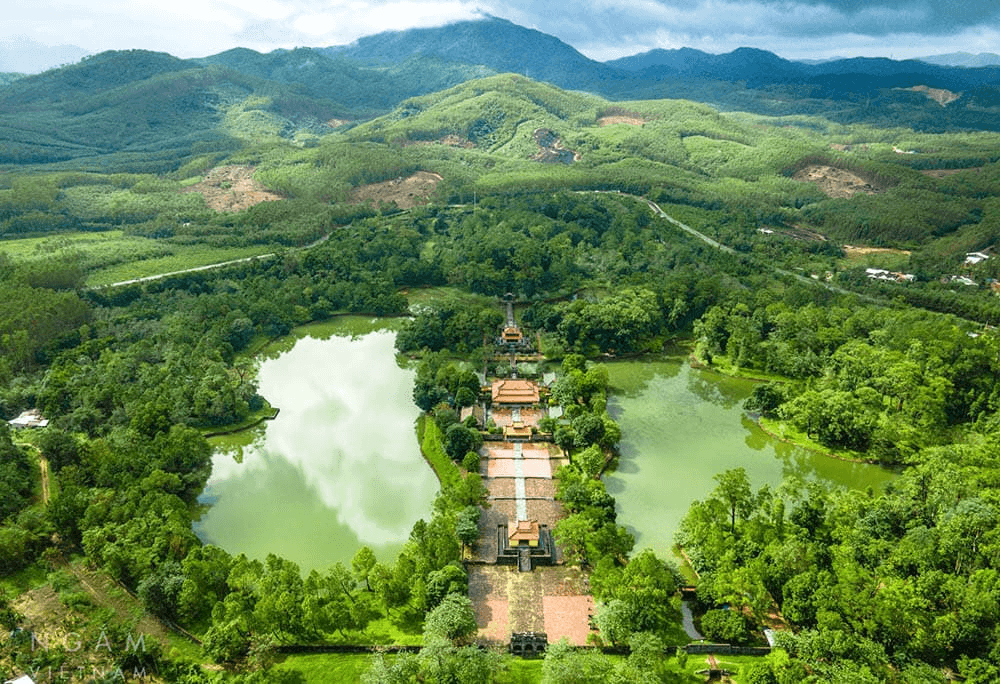
A bird's-eye view reveals the harmonious layout of the Minh Mang Tomb complex, creating a majestic natural landscape reminiscent of a person resting with their head on Kim Phung Mountain. The two rivers in front resemble outstretched legs, while the two tranquil Truong Minh Lakes resemble relaxed hands in a realm of tranquility.
The design of the project is based on the guiding principle of the "Heaven – Earth – Human" philosophy. This philosophy is characterized by the delicate combination of man-made structures (electricity, towers) and natural elements (gardens, lakes, mountains). This harmony creates a peaceful setting and expresses a profound philosophical concept of the connection between humans and the universe.
2. Ticket prices for Minh Mang Tomb in Hue and opening hours (Latest update 2025)
After learning a little about Minh Mang Tomb, the opening hours and ticket prices are certainly of interest to many visitors. Below is the latest updated information for 2025:
2.1. Admission fee to Minh Mang Tomb:
| Ticket Type | The Locations Include | Adult Ticket Price | Child Ticket Price (ages 7-12) |
| Single ticket | Only visit the Tomb of Minh Mang | $150 | 30,000 VND |
| Combined ticket for 2 points | Minh Mang Mausoleum + Gia Long Mausoleum | 240,000 VND | 30,000 VND |
| Combined ticket for 2 stops (Line 1) | The Imperial City of Hue + Minh Mang Mausoleum + Khai Dinh Mausoleum | $420 | $80 |
| 3-point combo ticket (Line 2) | The Imperial City of Hue + Minh Mang Tomb + Tu Duc Tomb | $420 | $80 |
| Combined ticket | The Imperial City of Hue + Minh Mang Tomb + Tu Duc Tomb + Khai Dinh Tomb | $30 USD | 100,000 VND |
Note:
- Children under 6 years of age are free admission ticket.
- Buying a combined ticket is a very economical choice if you plan to visit more than two sites in the Hue Imperial City complex.
2.2. Opening hours of Minh Mang Tomb
- Hours of operation: 7:00 AM – 5:30 PM.
- Open every day of the week, including holidays and Tet.
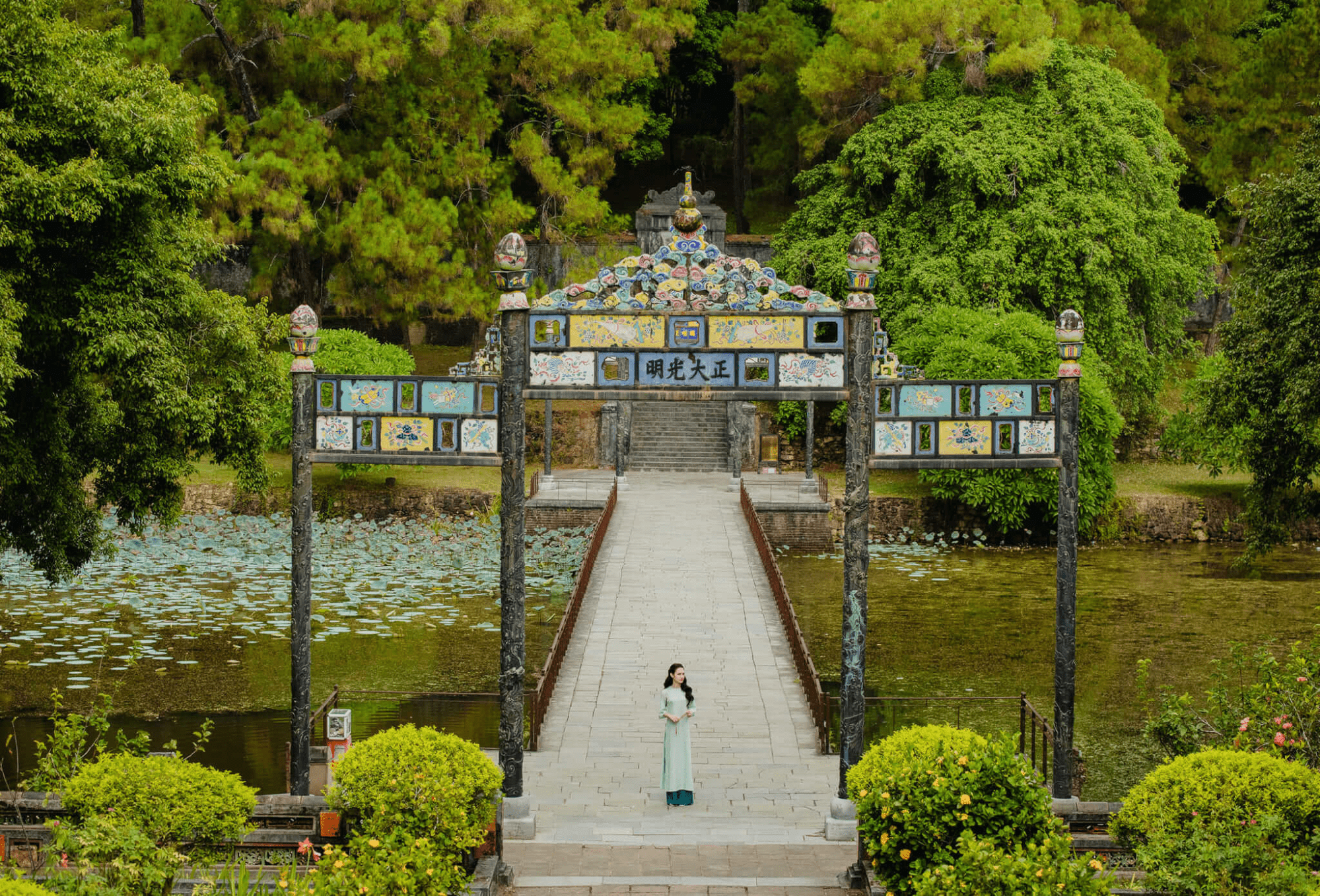
3. Directions and how to get to Minh Mang Tomb
To make your trip complete, choosing a comfortable mode of transportation will help you conserve your energy for exploring.
3.1 Detailed travel guide to Hue City
To ensure a complete journey exploring the ancient capital from the very first step, visitors from Hanoi, Da Nang, or Hoi An can choose the comfort of the Queen Cafe Bus limousine. A smooth ride and a stop right in the center will be the perfect start, helping you get ready to conquer the beauty of Minh Mang Tomb and other heritage sites.
You can refer to the price list for the main routes below:
| BUS ROUTE TO HUẾ | PRICE | BOOK TICKETS |
| Hanoi ⇔ Hue | $15.00 – $22.50 | Place it here |
| Da Nang ⇔ Hue | $150 | Place it here |
| Hoi An ⇔ Hue | $150 | Place it here |
| Ninh Binh ⇔ Hue | $150 - $200 | Place it here |
| Quang Binh ⇔ Hue | $180 | Place it here |
📞 For attentive consultation and the fastest ticket booking, you can contact:
- Hotline: 0906.413.468 – 0914.215.809
- Zalo: 0905.746.884 – 0914.215.809
- Website: https://queenbus.com.vn/
- Fanpage: Queen Cafe Open Bus
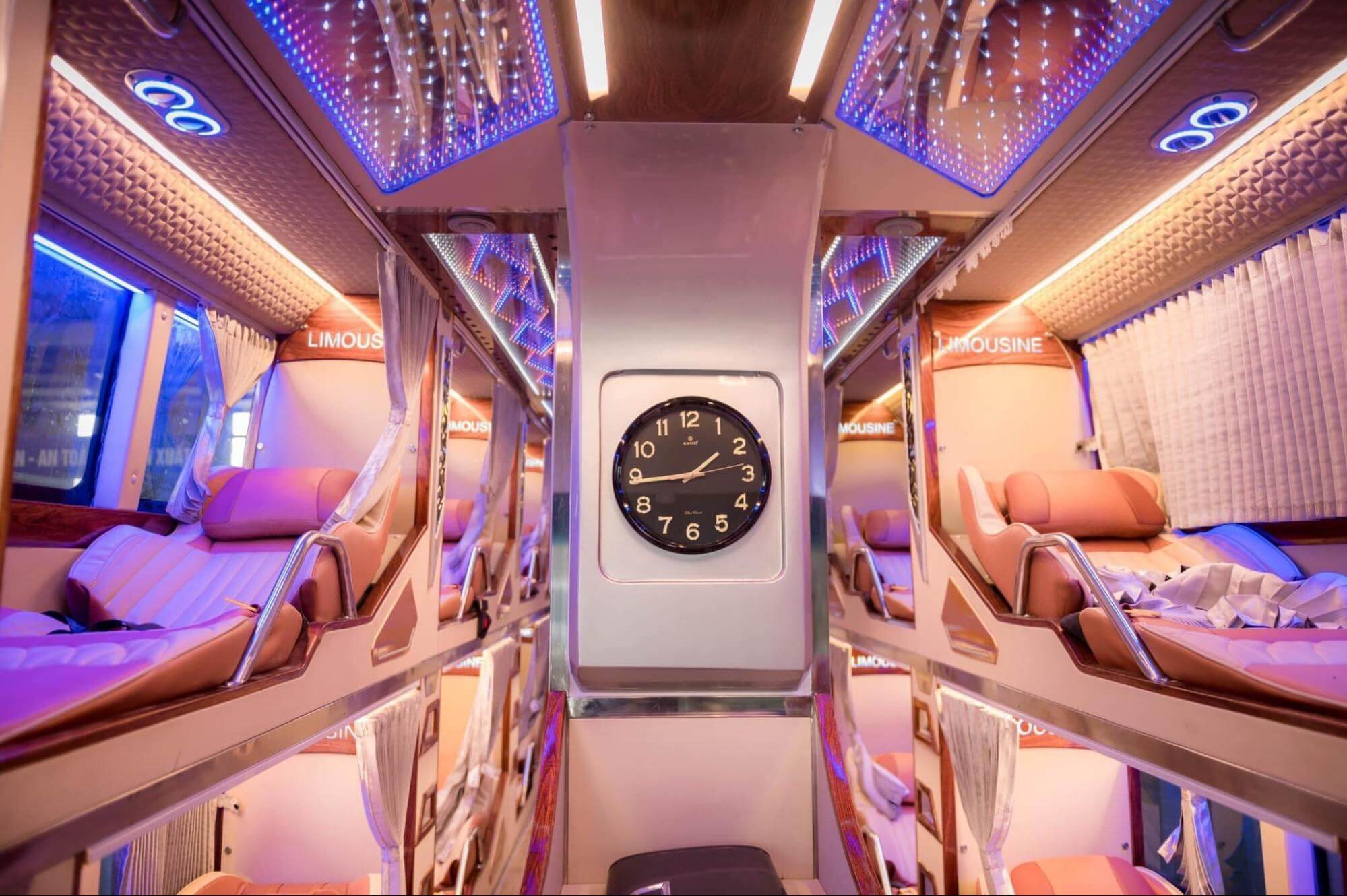
3.2. Travel by road (motorcycle, car, etc.)
Starting from the Queen Cafe office at 7 Doi Cung, in the center of Hue city, you will travel southwest across Da Vien Bridge and turn onto Bui Thi Xuan Street. Continue along Huyen Tran Cong Chua Street, passing Tu Duc Tomb and Tu Hieu Pagoda. Then, turn onto National Highway 49 Follow the signs to the tomb area. When you arrive, park your car in the parking area and you can enter the Minh Mang Tomb!
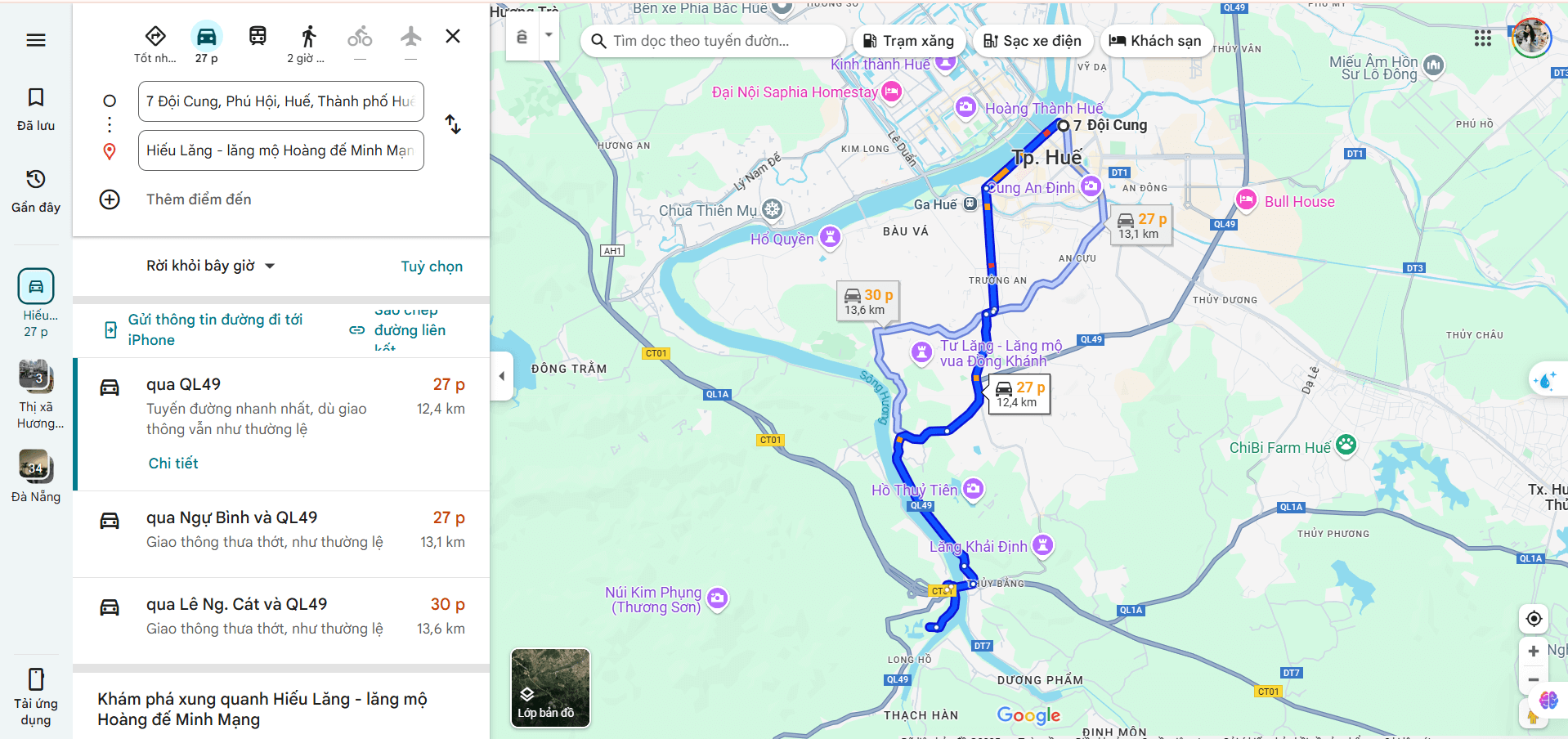
3.3. Cruise experience on the Perfume River
Your journey to explore Minh Mang Tomb would be incomplete without experiencing a dragon boat cruise on the river. Perfume River Poetic. This is not only a means of transportation steeped in traditional culture, but also an opportunity for visitors to fully enjoy the charming beauty of the ancient capital. Visitors can also enjoy afternoon tea, sweet pastries, and Hue folk songs on the Perfume River!
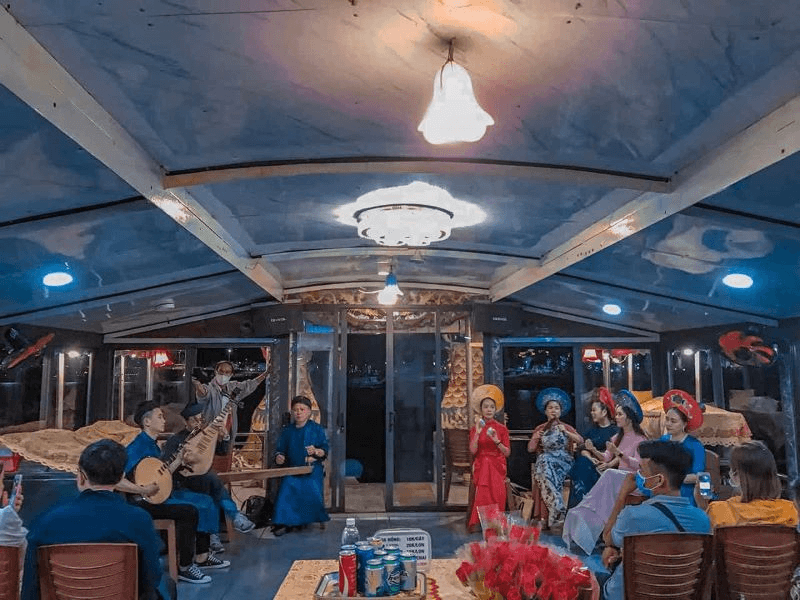
4. Discover the unique architecture inside Minh Mang Tomb
Known as one of the tourist destination Hue With its unique architecture, Minh Mang Tomb bears the strong imprint of Hue's history. Each location is like a living page of history, revealing countless stories about the Nguyen dynasty through distinctive cultural features and masterful architectural artistry.
4.1. Tour itinerary of Minh Mang Tomb along the Thien Dao axis
The Minh Mang Mausoleum in Hue is meticulously planned according to the principle of the "sacred axis." Visitors typically begin their journey at the Dai Hong Mon Gate—the main gate featuring the distinctive architectural style of the Nguyen dynasty.
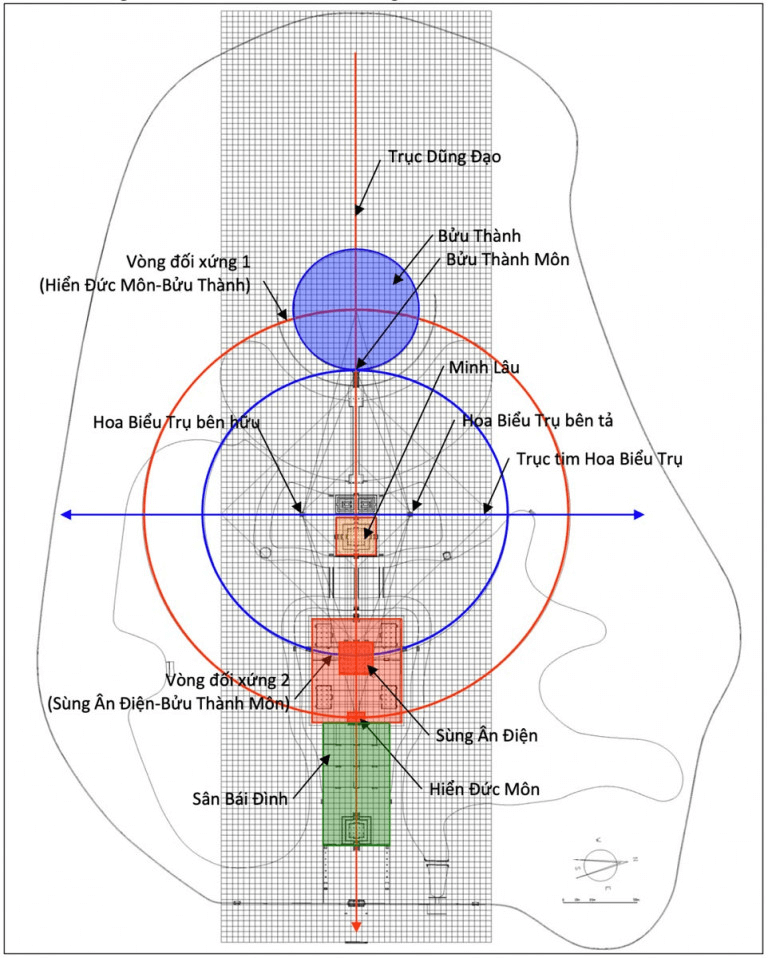
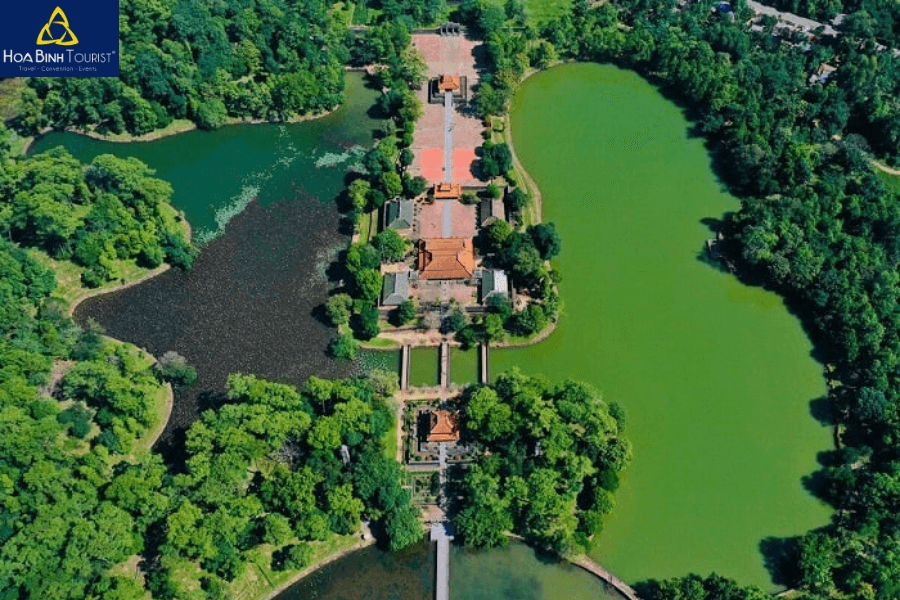
4.2. Dai Hong Mon – The majestic main gate
The Grand Red Gate is the majestic main gate of Minh Mang Tomb, known for its three-gate architecture with three passageways and a 24-roofed overlapping roof. One of the strictest regulations and also a highly symbolic detail at the tomb is the story of the Great Red Gate. Since its construction, this central gate has only been opened once to welcome the coffin of King Minh Mang to his final resting place.
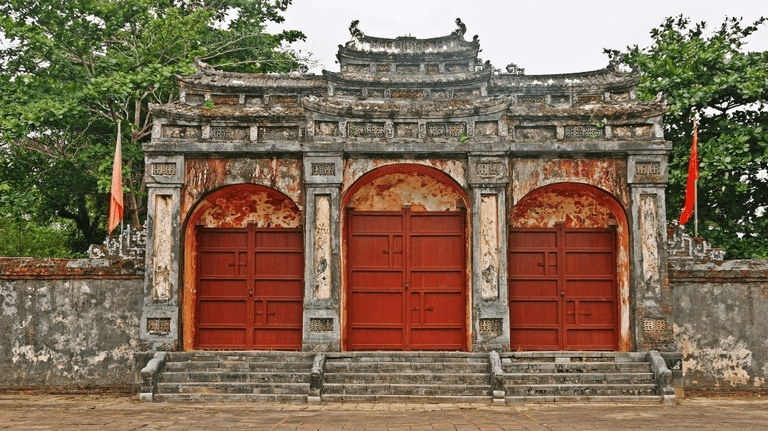
4.3. Bai Dinh – The courtyard and the stele "Thanh Duc Than Cong"
After passing through the main gate of Dai Hong Mon, you will arrive at Bai Dinh, a large courtyard dedicated to performing sacrificial rituals. On both sides of Bai Dinh courtyard are two rows of stone statues of civil and military officials, elephants, and horses, standing solemnly as if paying homage before the tomb. In the center of Bai Dinh, you will see a large stone stele engraved with the words "Thanh Duc Than Cong" (Holy Virtue and Divine Deeds), compiled by King Thieu Tri, son of King Minh Mang, to praise his father's merits and illustrious career.
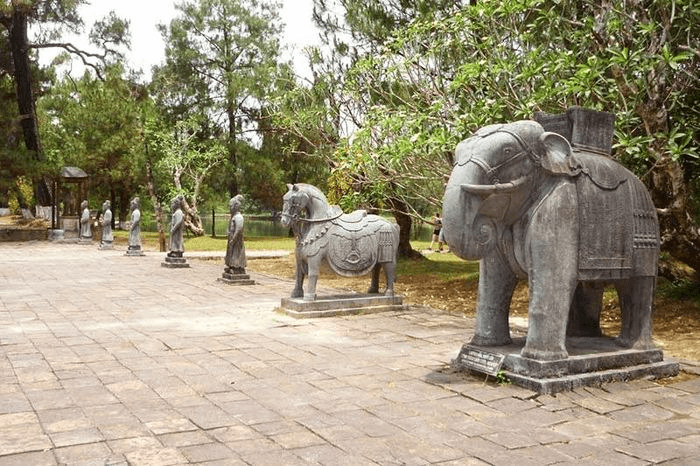
4.4. The Imperial Palace Area (Hien Duc Gate and Sung An Palace)
Continuing your journey to explore Minh Mang Tomb, you will arrive at the sacred Tam Dien area. This is where the tablets of King Minh Mang and Empress Ta Thien Nhan are worshipped. To enter Sung An Palace, you must pass through Hien Duc Gate.
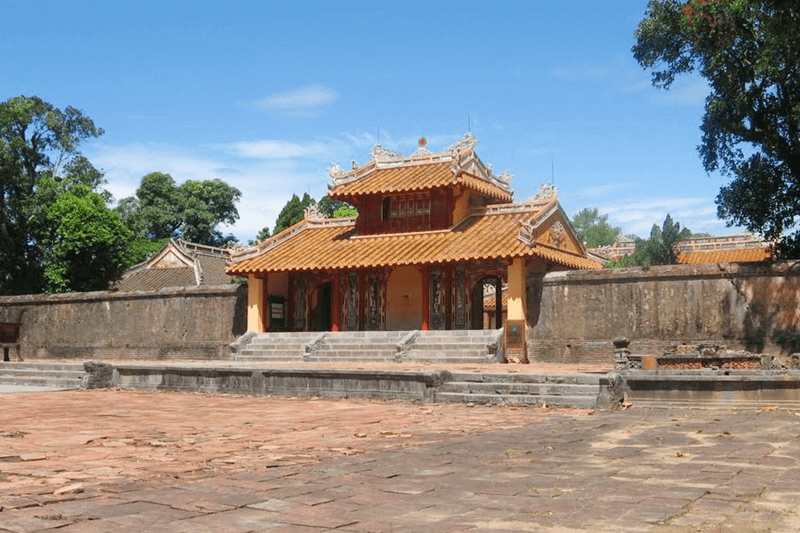
The Sung An Palace is the main architectural structure in the Tam Dien area, built with a large space and exquisite decoration, exuding a solemn and sacred atmosphere, expressing reverence for the deceased king.
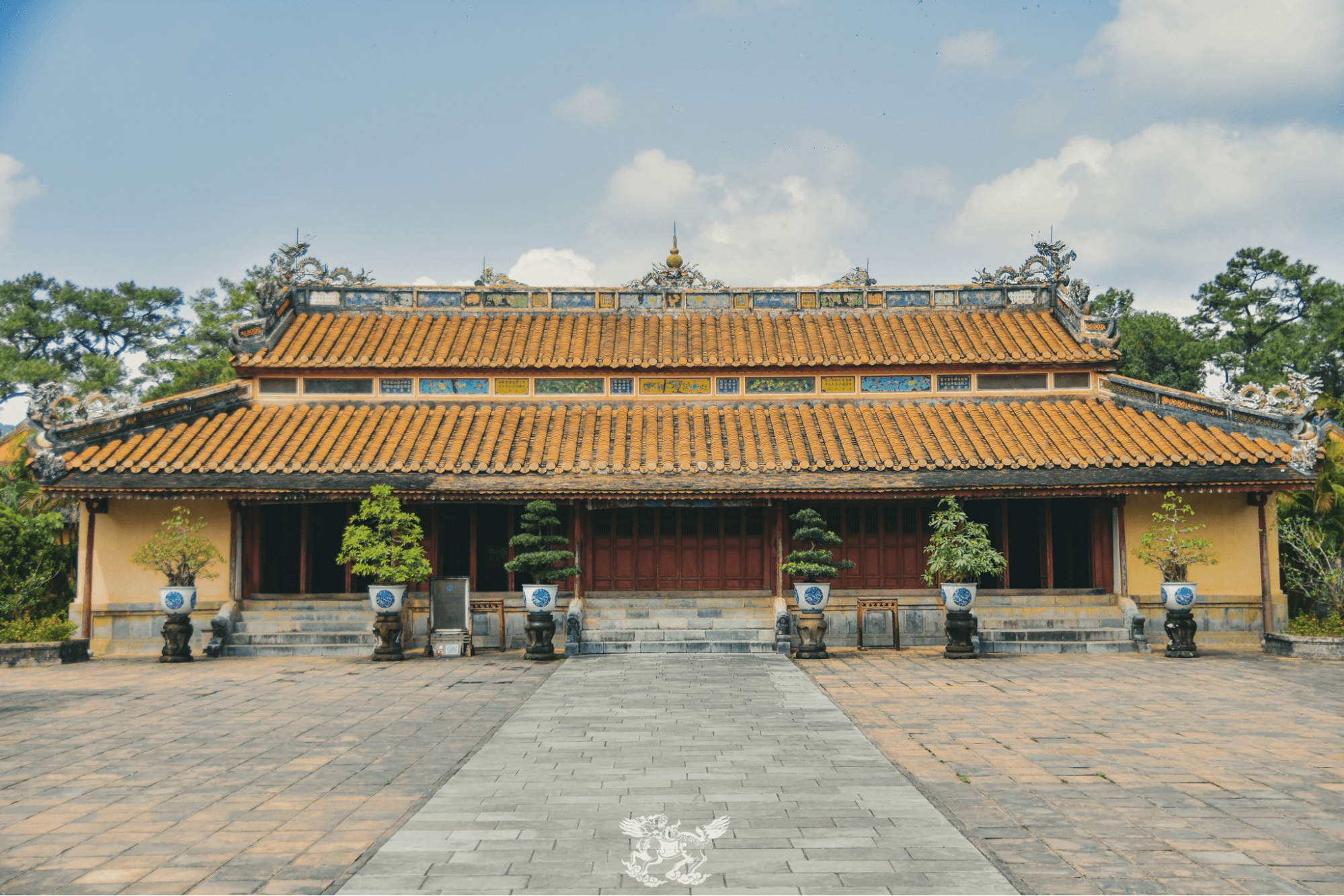
4.5. Minh Lau – Where the king recited poetry and enjoyed the scenery
The brightest and most attractive feature of Minh Mang Tomb for tourists is Minh Lau, a two-story pavilion gracefully perched atop Tam Dai Mountain. Minh Lau boasts an incredibly beautiful architectural style with eight exquisite roofs, located on the summit of Tam Dai Mountain. This was where the emperor used to go to recite poetry, immerse himself in nature, and contemplate life. The architecture of Minh Lau is not only beautiful but also carries profound philosophical meaning, representing the connection between humans and the universe.
Visitors can admire the picturesque beauty of the landscape stretching into the distance, with lush green foliage adding to the poetic charm of the scenery.
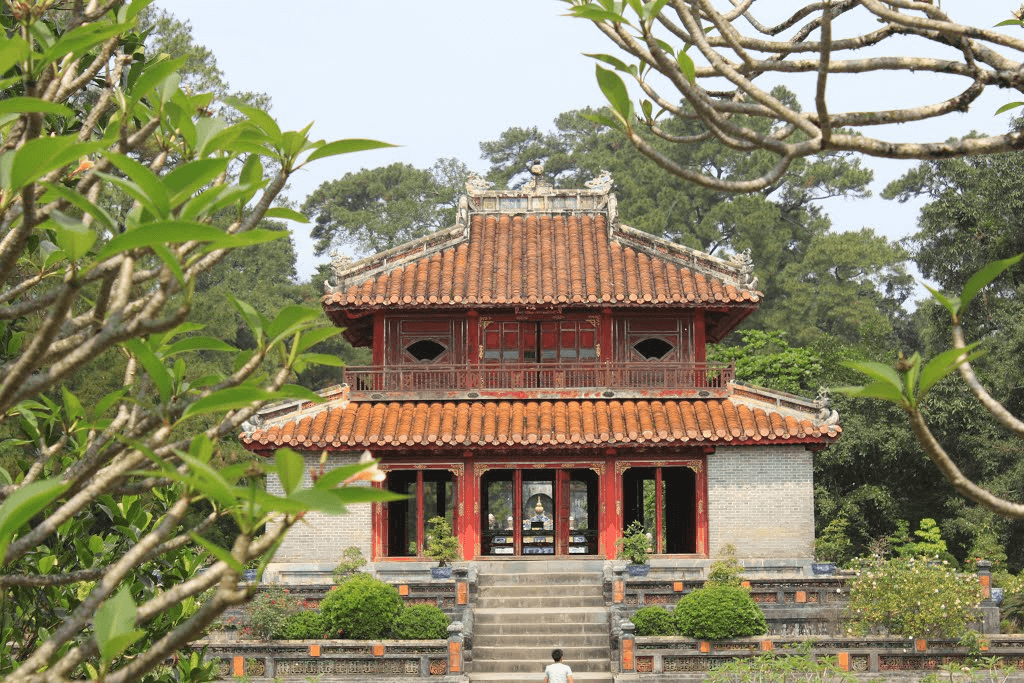
4.6. Tan Nguyet Lake and the Honest Bridge
The final destination Queen Cafe Bus would like to introduce to you is Tan Nguyet Lake (meaning "crescent moon lake"), which embraces Buu Thanh Ling Minh Mang behind it. Buu Thanh – symbolizing the image of the sun, together with Tan Nguyet Lake, creates a harmonious Yin-Yang combination.
Crossing Tan Nguyet Lake is the Chinh Truc Smart Bridge, made of stone, connecting the Tam Dien area with Buu Thanh. This is an ideal stop for visitors to admire the beauty of the mausoleum more clearly.

5. The little-known mysteries of Minh Mang Tomb and Buu Thanh
5.1. Minh Mang Tomb – The final resting place of the Emperor
Buu Thanh is a solemn and fortified area within the Minh Mang Tomb complex. It was built around the king's resting place, with its most notable feature being the circular wall, which is impressive in both circumference and height. Buu Thanh is definitely a must-see when visiting the tomb complex.
What is particularly noteworthy is that this area has only one entrance, which is opened once a year during the Qingming Festival. During this time, those in charge are allowed to enter to carry out repairs, maintenance, and preservation work to maintain the sanctity of the resting place of the emperor.
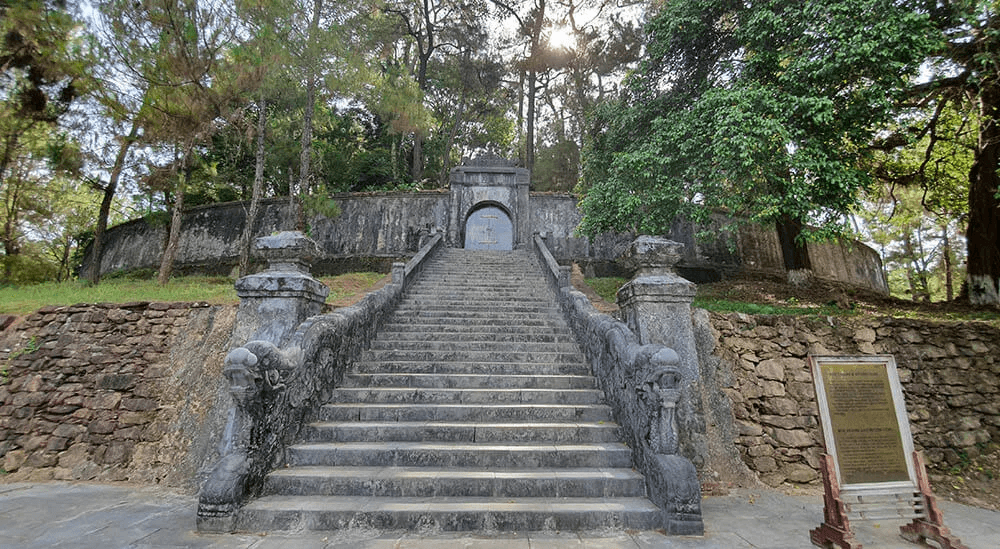
5.2. The mystery surrounding the exact location of King Minh Mang's tomb
What undoubtedly intrigues visitors to Minh Mang Tomb is the exact burial location of the king's remains. According to many theories, the remains of King Minh Mang were not buried in the central location of the tomb but were kept absolutely secret. The purpose of this was to protect the sanctity and prevent any external intrusion. The existence of this theory is one of the factors that attracts many tourists to visit.

6. Useful tips for visiting the Tomb of King Minh Mang
Whether it's your first time in Hue or you've been here before, a little preparation before exploring the Tomb of Emperor Minh Mang will help you save time, conserve energy, and have a smoother experience.
6.1. When is the best time of year to visit Minh Mang Tomb?
To have the best experience visiting Minh Mang Tomb, choosing the right time to visit is quite important. According to the experience of many tourists, The dry season in Hue, which lasts from March to August, is usually the most ideal time. At this time, the weather in Hue is quite nice, with clear blue skies and plenty of sunshine, making it convenient for exploring outdoor tombs.
In addition, spring, approximately from January to FebruaryIt's also a good choice. The weather in Hue during spring is usually cool and pleasant, creating a comfortable feeling for tourists when sightseeing. However, you should also check the weather forecast before your trip to be best prepared.

6.2. Notes on attire and visiting regulations
To visit the Minh Mang Tomb in Hue, visitors must comply with the following regulations:
- Dress modestly and appropriately, avoiding short skirts or tank tops when entering the temple.
- Do not litter, vandalize, climb on historical sites, or touch artifacts.
- Keep order, do not make noise.
- Do not film commercially or use a drone without prior permission.
- Follow the instructions of security guards and signs within the historical site.

6.3. Suggested attractions near Minh Mang Tomb
Minh Mang Tomb is located on a fairly convenient route, allowing you to combine your visit with other famous mausoleum other than the Nguyen kings.
6.3.1. Khai Dinh Mausoleum
Very close to Minh Mang Mausoleum is Khai Dinh Mausoleum, a unique architectural work blending Eastern and Western styles, modern and classical. The Khai Dinh Tomb in Hue preserves many historical, cultural, and artistic values, serving as evidence of the cultural exchange between Vietnam and Western countries that was prominent at one time.
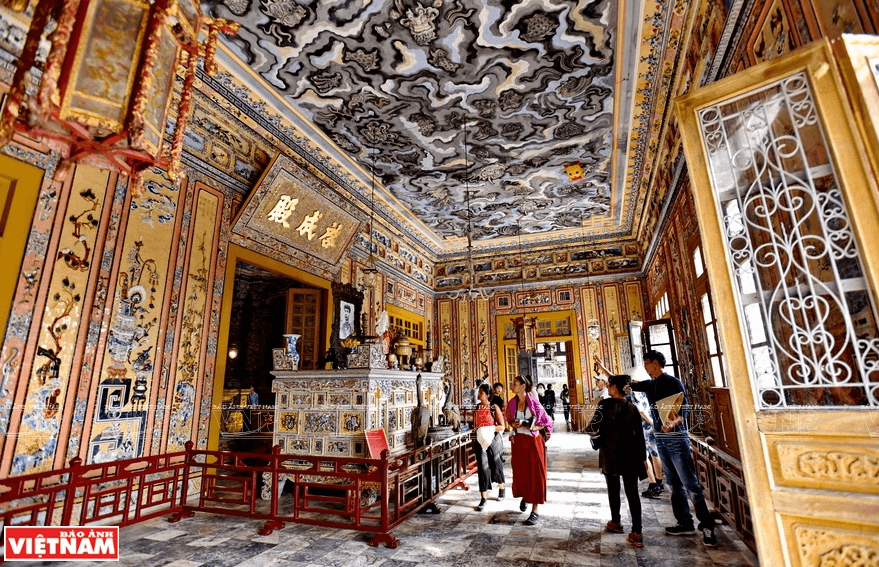
6.3.2. Tu Duc Mausoleum
A must-visit location near Minh Mang Tomb is Tu Duc Mausoleum, renowned for its poetic beauty and harmony with nature. Tu Duc Tomb is considered one of the four most beautiful tombs on Hue's tourist map and has been recognized by UNESCO as a World Cultural Heritage Site.
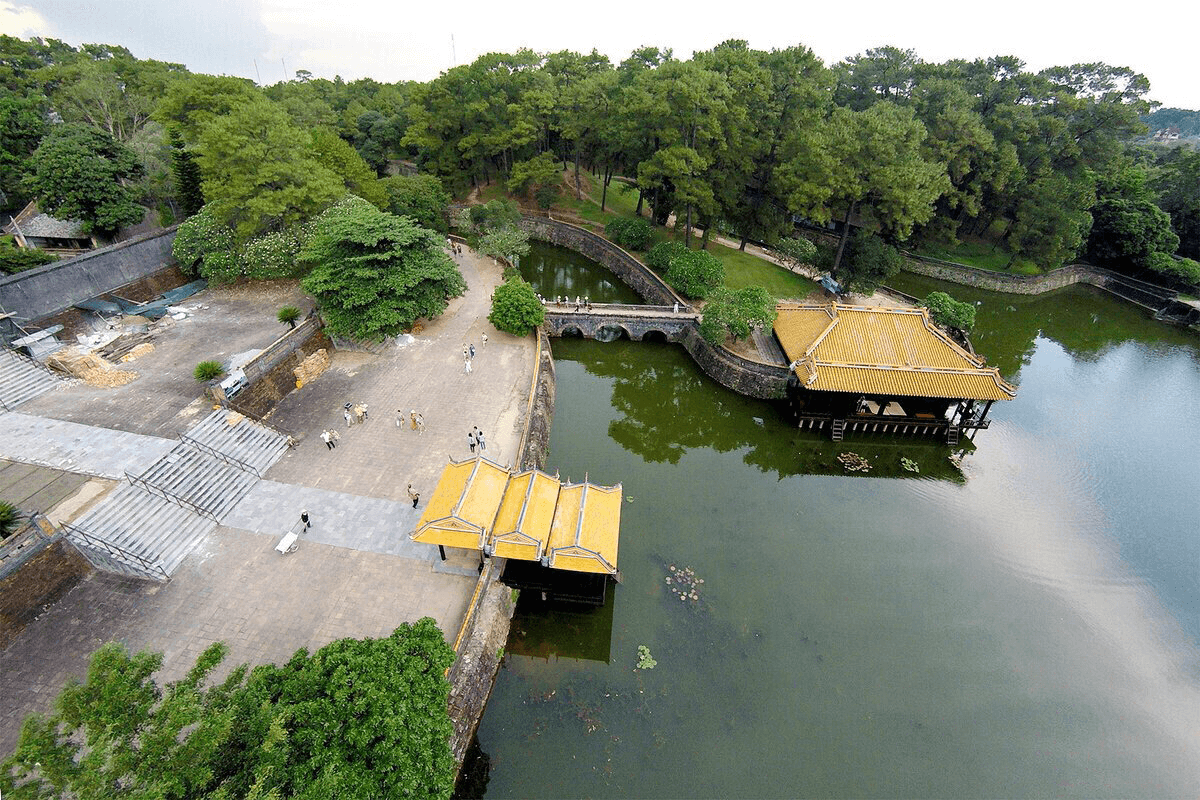
Arranging visits to these destinations along a route will help you save time and have a more complete journey exploring the Hue Imperial City complex.
Final words
Concluding our journey exploring Minh Mang Tomb, we not only admire a unique architectural masterpiece but also feel the profound historical and cultural values hidden in every detail. Come here once to witness its enduring beauty and fully experience the essence of Vietnam's cultural heritage.

